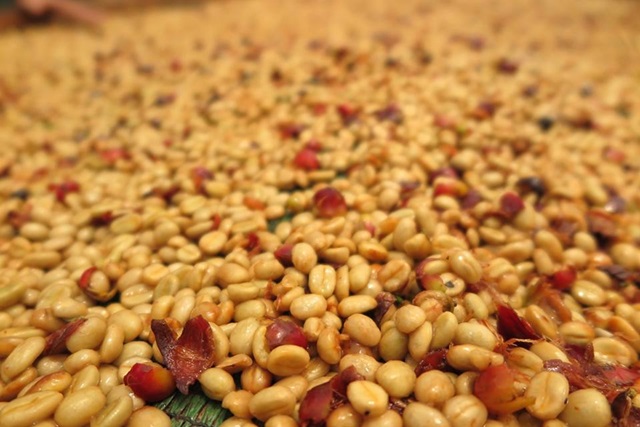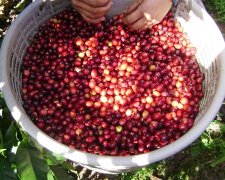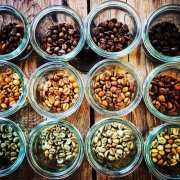Introduction of the 2016 Costa Rican COE champion Shumawa Manor Finca Sumava de Lourdes

For professional baristas, please follow the coffee workshop (Wechat official account cafe_style)
Monte Llano Bonito Manor, one of the two estates of Sumava de Lourdes, won the 2016 CoE Cup. The 13th place (Finca Monte Llano Bonito) in the 2015 Costa Rica CoE Cup (Finca Monte Llano Bonito) has two estates, Monte Llano Bonito and Monte Lourdes, which has now been named Finca Sumava de Lourdes.
Costa Rica
Costa Rican coffee cultivation was introduced by Cuba in 1779 and exported for the first time in 1820. There are about 32000 coffee farmers, with an average planting area of less than one hectare (10000 hectares) per farmer.
Costa Rica has a population of 41 billion (2006), with a coffee planting area of 82500 hectares and an annual production of 1.7 million bags (60kgs per bag). The annual domestic consumption is 380000 bags, with an average annual national consumption of 5.5kgs, which is higher than that of Japan (consumption 4kgs). At present, Taiwanese are only slightly higher than 1kg.
Costa Rica is the country where coffee was first introduced into Central America and has a long history. The coffee organization has a complete system from production to marketing. Because it is located in the Central American Gorge, there are many volcanoes, it has the natural advantages of sunshine and land, and the climate is reconciled by Pacific and Atlantic currents and sea breezes at the same time, the coffee produced has the characteristics of local micro-climate and soil conditions, in terms of quality and quantity, Costa Rican coffee has always been recognized by the world, and has been rated as one of the world-class high-quality coffee.
Costa Rican coffee has been cultivated for two hundred years. It was first planted on the slopes of the Poas and Barva volcanoes, today known as the Central Valley (Central Valley). The seven main coffee producing areas are distributed from northwest to southeast, along with the inland central plateau.
Costa Rican volcanic terrain with fertile volcanic ash, mild and suitable temperature, and stable and abundant rainfall is one of the reasons why coffee has become one of the main agricultural products in Costa Rica. The seven major producing areas are: Tarrzu, Tres Rios, Orosi, Central Valley, West Valley, Turrialba and Brunca.
Costa Rica has a long history of cultivating coffee, but in the past 10 years, the new method of "dry" treatment has become fashionable, collectively known as "honey treatment", which uses the scraper to adjust the scraping degree of the pulp. The output shows a "honey feeling" from light to dark (white, yellow-red-white, yellow-red-black) with a thick sense of acidity and complex aroma. Each has its own depth and advantages.
Orange County in the Valley of Central America / Western Costa Rica
Shumawa processing Plant Beautiful Plain Manor
Award record: 2016 COE champion
Caturra
Baking
Shallow baking
Flavor
Sweet berries, cranberries, deep fruit tones, vanilla, rich taste, litchi and vanilla, fresh spices, delicate and rich acidity, sweet and smooth.
Price
Ten-in ear / NT$550
The country
Costa Rica (Costa Rica)
Producing area
Orange County (Lourdes) in the western valley
Treatment plant
Shumawa processing plant
Manor
Beautiful Plain Manor
Treatment method
Sun treatment
Altitude
1670-1780 meters
Important Notice :
前街咖啡 FrontStreet Coffee has moved to new addredd:
FrontStreet Coffee Address: 315,Donghua East Road,GuangZhou
Tel:020 38364473
- Prev

History of planting and treatment of Wamuguma in Thika Wamgumar treatment Plant, Sika District, Kenya
For the exchange of professional baristas, please follow the coffee workshop (Wechat official account cafe_style) the history of planting and processing of Kenyan coffee. The history of Kenyan coffee can be traced back to the end of the 19th world. Coffee tree species were introduced from neighboring Ethiopia in the north. After improvement of their own varieties, there are four common varieties: Bourbon and Kents.
- Next

Costa Rica Brumasdel Zurqui Centro Estate El Centro
Professional barista exchanges, please pay attention to coffee workshop (Weixin Official Accounts cafe_style) Costa Rica Brumas del Zurqui Centro Finca El Centro Villa Sarchi Red Honey Costa RicaC ntral Valley Brumas El Centro Villa Sarchi Red Honey Costa Rican coffee has a long history, but
Related
- Detailed explanation of Jadeite planting Land in Panamanian Jadeite Manor introduction to the grading system of Jadeite competitive bidding, Red bid, Green bid and Rose Summer
- Story of Coffee planting in Brenka region of Costa Rica Stonehenge Manor anaerobic heavy honey treatment of flavor mouth
- What's on the barrel of Blue Mountain Coffee beans?
- Can American coffee also pull flowers? How to use hot American style to pull out a good-looking pattern?
- Can you make a cold extract with coffee beans? What is the right proportion for cold-extracted coffee formula?
- Indonesian PWN Gold Mandrine Coffee Origin Features Flavor How to Chong? Mandolin coffee is American.
- A brief introduction to the flavor characteristics of Brazilian yellow bourbon coffee beans
- What is the effect of different water quality on the flavor of cold-extracted coffee? What kind of water is best for brewing coffee?
- Why do you think of Rose Summer whenever you mention Panamanian coffee?
- Introduction to the characteristics of authentic blue mountain coffee bean producing areas? What is the CIB Coffee Authority in Jamaica?

